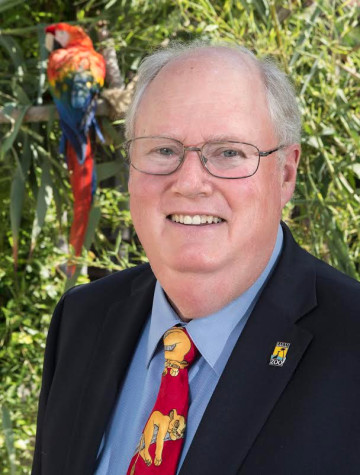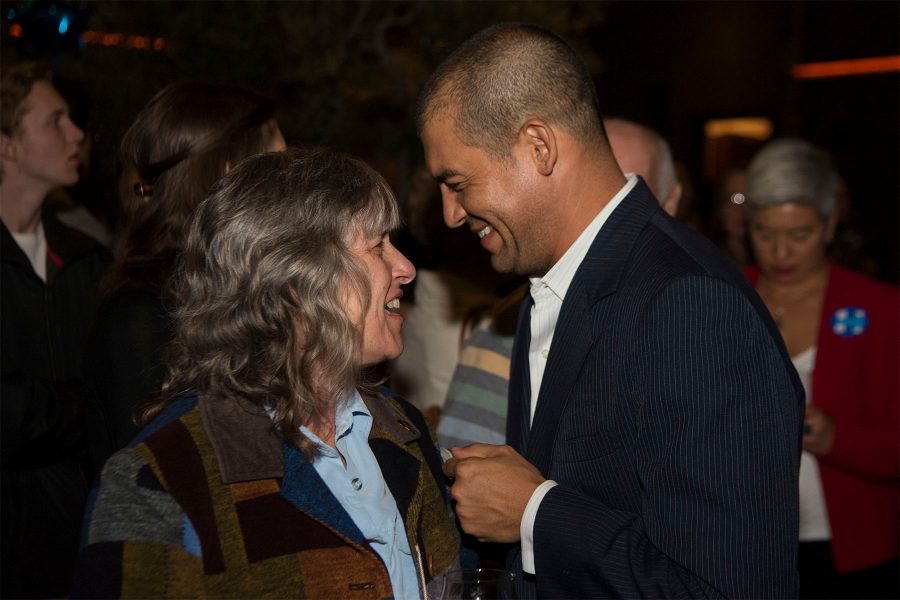
Richard Block, Santa Barbara Zoo CEO
I read with interest the editorial of September 21 titled “Zoos provide inhumane conditions for animals.”
Part of my job as CEO of the Santa Barbara Zoo is to talk with people about their perceptions and misperceptions about the work we do. There’s always room for a healthy discussion on the ethics of zoos and aquariums and keeping wild animals under human care.
When I consider the passion our staff feels for our animals, and their dedication to the welfare of the animals under their care, I’m not sure what the writer meant by “cruel.”
What is cruel?
That human beings are responsible for killing 96 elephants in Africa every day to satisfy a senseless demand for ivory (that’s over 35,000 each year).
That many shark species are disappearing through neglect and human consumption.
That habitats are shrinking for countless species as a result of expanding human populations.
And, finally, that the very survival of many plants and animals are at risk because humans refuse to recognize our contribution to climate change.
It is not clear if the writer actually visited our zoo. If they had, they may have noticed that the animals appear to be very comfortable in close proximity to people — quite the opposite of what the editorial suggests.
Our lowland gorillas, African lions, meerkats, small-clawed otters, and fennec foxes often rest against the glass that separates them from Zoo guests. Our five endangered California condors are especially fond of hanging out on a perch that is closest to the visitors who view them from the nearby observation deck.
There are many places in these exhibits where animals could remain out of sight, but they choose to remain close to people. Who’s watching who?
Yes, there are some “zoos” that should be closed, but by your own admission, the Association of Zoos & Aquariums (AZA), which establishes standards for accreditation, holds all of its 230 accredited members to the same high levels of animal care.
Accreditation is a rigorous process: only about 10 percent of the more than 2,000 animal exhibitors in the United States licensed by the US Department of Agriculture (USDA) are accredited.
Yes, zoos do promote the animals under their care to encourage people to visit.
It is exactly the same as art museums promote exhibitions, restaurants feature their chefs, and community colleges feature a diversity of smiling students.
Attracting visitors allows the Santa Barbara Zoo to continue to provide the best care for its animals, create inspiring learning opportunities for guests, and contribute to local conservation programs that ensure a better future for wild California condors, Channel Island foxes, southern sea otters, and others.
To use your term, “there’s no getting around the fact” that visiting accredited zoos and aquariums inspires people to take action to help protect and conserve animals in the wild.
And that, in spite of being approximately 30 acres, the Santa Barbara Zoo provides our animal residents with stimulating enrichment activities, the highest quality care, and a professional staff truly dedicated to their mental and physical wellbeing.
For the readers who simply take your editorial at face value, there’s not much room for a dialogue.
But for readers curious about our mission and programs, visit the Zoo’s website, YouTube Channel, or Facebook page.
Or better yet, visit the Zoo.
Attend Keeper Talks, interact with members of the Zoo team, and see for yourself. Join the more than 22 million guests who visit California’s 23 accredited zoos and aquariums each year.
Together, we are building the world’s largest conservation movement, at a time when it is so desperately needed.
Richard Block, CEO
Santa Barbara Zoo
[editor’s note: the story this letter is referring to is a local column and only represents the opinion of the writer. It is not an editorial and does not reflect the opinion of the Editorial Board.]





